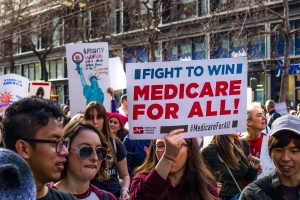Benefits Buzz
Over the years, HSAs have been touted as a way to pay for out-of-pocket medical expenses with tax-free dollars. However, recently HSAs have been making headlines as an alternative to 401(k) plans and other retirement plans.
The term “Medicare for All” has been making headlines recently. Democrats across the country have made this concept a central part of their platforms, and polls have shown that more than half of Americans are in favor of it.
But what does it really mean? Well, the best answer is that it means different things to different people.
Annual Medicare Part D reporting is required for all employers who provide health benefits with prescription drug coverage. The reporting is an online filing to the Centers for Medicare & Medicaid Services(CMS), and it lets CMS know if the prescription drug coverage available on the employer’s health plan is “creditable.”
A stand-out strategy for small businesses: Voluntary benefits enable small companies to do more with less
The competition for talent is fierce for small businesses. One in four say the talent pool for their open positions is poor, [1] and the Society for Human Resource Management lists retaining employees as one of the top three issues facing companies with 3-99 employees (along with employee productivity and controlling health insurance costs).[2]
Agency officials were busy last week releasing updated forms and publications while also proposing new rules that would generally impact health plans in 2020. Here are three important releases which are now available:
The Employee Retirement Income Security Act of 1974 (ERISA) requires employers to provide a Summary Plan Description (SPD) to employees if they offer health, dental, vision, life, disability or other benefits.
Tag Cloud
Archives
Enter Your Email






